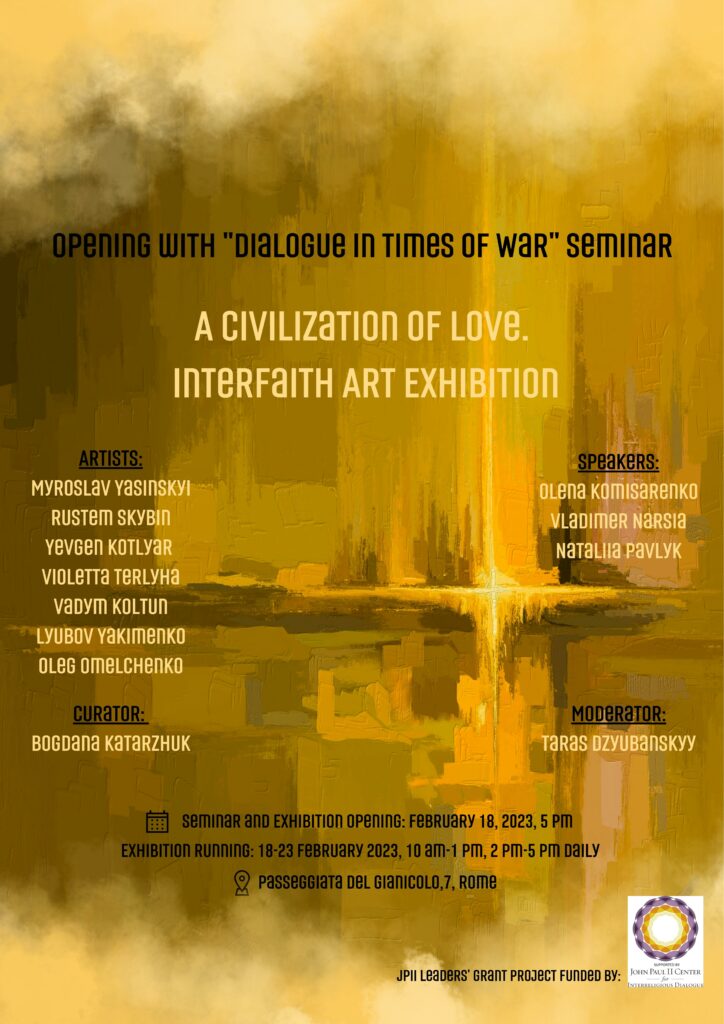
“Civilization of Love'” Interfaith Art Exhibition
The impacts of globalization, postmodernism, and immigration have unquestionably expanded human communities beyond the confines of their original territorial and ideological frameworks. The advocacy and movement toward effective interreligious dialogue going on across the globe between major religions have intensified. It has become somewhat anachronistic to validate mono-culturalism and exclusivism as the proper order in diverse societies today. It is also becoming increasingly unacceptable to ignore, deny, or demean the existence of the other in many postmodern societies today. It appears that global communities are shifting from “living beings” to “thinking beings”[1], hence, among others, anticipating a “civilization of love” concept.
The notion “civilization of love” was originally proposed by Pope Paul VI and has its roots in the documents of the Second Vatican Council. Nonetheless, the development and popularisation of the idea were fully pursued by Pope John Paul II who, within the framework of social formation, promoted the civilization of truth and love. The main aim of his pontifical program of a “civilization of love” development comes down to infusing life and human activity with the spirit of God in every field of human existence, especially social, cultural, economic, and political ones, by means of the implementation of social justice and love, resignation from violence and exploitation, and the respect of the dignity of each individual.
Moreover, the Pope asserted that the way of building the civilization of love is to maintain the dialogue between various cultures and religions. And among soldiers and volunteers who currently enjoy the highest level of trust and respect in Ukrainian society, there are many representatives of Christian, Muslim, and Jewish religions who cooperate not only within their communities but also between denominations, building close human and interfaith connections. As well in the art field, an artist from Muslim Crimea congratulates Christians on Easter with a poster depicting the Easter egg painted in an Islamic style and then adding the images of Czech hedgehogs which are the symbol of war pain and defence uniting all Ukrainians; a Jewish artist rethinks and depicts the “Crucifixion” of Ukrainians made by Russian missiles and a Christian artist asks the Angels present in all three religions to “save and protect” us. The grief unequivocally unites the people, but only love to God, the state and other people gives them the strength to act and keep standing.
The exhibition, opening with the seminar “Dialogue in times of war”, explores the issues of interreligious dialogue in the context of war and the existential search for God by a person (artist). It also manifests the desire of Ukrainians to build a society on the basis of the “civilization of love” concept and application of interfaith dialogue. However, it also raises the question of whether the mutual aid of different religions representatives during wartime is a dialogue about values or a concerted effort to survive. And what are the practical ways of interreligious dialogue application not only to diplomatic issues but also to solving the daily challenges people are facing because of war?
Register here for the seminar Dialogue in times of war

[1] Levinas, Emmanuel (1998a). Collected Philosophical Papers, transl. Alphonso Lingis, Pittsburgh, Pennsylvania: Duquesne University Press.
